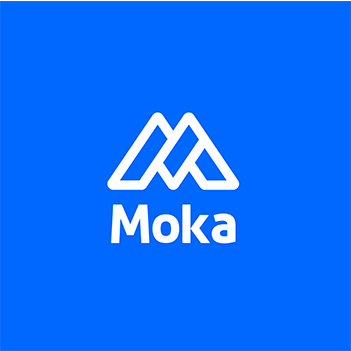Project-Based Hiring Models That Boost Business Efficiency

Project-based hiring models empower you to adapt your workforce to meet specific demands. Unlike traditional hiring, this approach eliminates fixed costs like salaries and benefits for permanent employees. You can allocate a precise budget for each project, ensuring better financial control. By hiring experts for specialized tasks, you avoid inefficiencies and achieve higher returns on investment. This model also reduces the need for extensive training, saving time and resources. Whether you’re managing short-term projects or navigating market shifts, project-based hiring helps your business stay agile and efficient.
Key Takeaways
Project-based hiring helps businesses adjust workers for specific tasks.
This method lowers costs by avoiding long-term worker contracts.
It helps manage money better and use resources wisely.
Hiring experts for short jobs finishes work faster with better results.
Companies can grow or shrink teams quickly based on needs.
This makes them flexible in changing markets.
Managing these teams needs clear talks, set goals, and good tools.
Understanding Project-Based Hiring Models
What Is Project-Based Hiring?
Project-based hiring involves recruiting individuals or teams specifically for a project with clear goals and deliverables. Unlike traditional recruitment, this model focuses on short-term needs rather than permanent roles. It allows you to bring in experts with specialized skills tailored to the project’s requirements. This approach ensures cost efficiency, faster execution, and higher-quality outcomes. Workers also benefit from flexibility and autonomy, as they can choose projects that align with their expertise.
By adopting project-based hiring models, you can scale your workforce quickly and efficiently. This flexibility is especially valuable in industries where demand fluctuates or where innovation drives success. Whether you need a software developer for a tech launch or a designer for a marketing campaign, this model ensures you get the right talent at the right time.
Key Differences Between Project-Based and Traditional Hiring
Understanding the differences between project-based hiring and traditional recruitment is crucial for making informed decisions. Here’s a quick comparison:
Aspect | Project-Based Hiring | Traditional Hiring |
|---|---|---|
Focus | Prioritizes outcomes and milestones | Centers on filling roles with temporary or permanent employees |
Risk Allocation | Vendor assumes the risk of achieving project goals | Employer bears the risk and responsibility for managing employees |
Cost Structure | Costs tied to deliverables, offering predictable budgeting | Costs based on hourly or salary rates, which can fluctuate |
Management Requirements | Requires less day-to-day oversight from the client | Involves direct management of staff by the client |
This table highlights how project-based hiring models provide a more flexible and outcome-driven approach compared to traditional recruitment methods. By focusing on deliverables, you can reduce risks and streamline workforce management.
Why Businesses Are Adopting Project-Based Hiring Models
Businesses are increasingly turning to project-based hiring for several compelling reasons:
Access to Specialized Skills: You can recruit experts with specific skills tailored to project needs, ensuring high-quality input and innovation.
Scalability on Demand: Adjust team size according to project demands, providing flexibility and efficiency.
Reduced Long-Term Commitments: Engage talent for the duration of a project, mitigating risks associated with long-term employment contracts.
Enhanced Focus and Efficiency: Dedicated project teams lead to higher productivity and faster project completion.
Faster Adaptation to Change: Quickly pivot and reconfigure teams in response to market changes or project demands.
The rise of remote work and the gig economy has further accelerated this shift. For example, 77% of Gen Z workers prioritize workplace flexibility, and 50% freelance at least part-time. This trend aligns perfectly with the principles of project-based hiring, making it a preferred choice for modern recruitment strategies.
Flexibility Benefits of Project-Based Hiring

Scaling Teams to Meet Demand
Scaling your workforce to meet fluctuating demands is one of the most significant advantages of project-based hiring. This model allows you to bring in the right talent exactly when you need it, ensuring your team size aligns perfectly with project requirements. Industries like IT development, marketing campaigns, product launches, and research projects benefit the most from this approach. Creative sectors, healthcare, and finance also leverage this flexibility to stay competitive.
By adopting project-based hiring, you avoid the inefficiencies of overstaffing or the risks of being understaffed during critical periods. Whether you're launching a new product or managing a seasonal campaign, you can scale your workforce up or down seamlessly. This adaptability ensures that your business remains agile and ready to tackle any challenge.
Adapting Quickly to Market Changes
In today’s dynamic markets, the ability to adapt quickly is crucial. Project-based hiring empowers you to reconfigure your workforce as needed, enabling swift responses to evolving demands. You can scale your workforce up or down based on project needs, avoiding the costs of maintaining a permanent staff. This approach is particularly beneficial in industries with fluctuating workloads, where agility is essential for staying competitive.
By assembling teams with specific skills for targeted tasks, you gain a competitive edge. This flexibility allows you to meet tight deadlines and deliver results faster. In fast-paced markets, where time-to-market is vital, project-based hiring ensures you stay ahead of the curve.
Reducing Long-Term Workforce Commitments
Reducing long-term workforce commitments offers significant financial benefits. With project-based hiring, you only pay for the work you need, when you need it. This eliminates the ongoing expenses associated with permanent employees, such as salaries and benefits. Precise budgeting becomes easier, as you can allocate a defined budget for each project. This level of financial control enhances your ability to manage resources effectively.
By minimizing fixed costs, you free up capital to invest in other areas of your business. This approach not only improves financial oversight but also reduces risks, making it an ideal solution for businesses navigating uncertain markets.
Efficiency Benefits of Project-Based Hiring
Faster Project Completion
Project-based hiring models help you complete projects faster by assembling specialized teams tailored to your needs. These teams consist of experts who focus solely on your project, ensuring maximum productivity. Unlike traditional hiring, this approach eliminates distractions and allows team members to dedicate their time and skills to achieving your goals.
Specialized teams adapt quickly to changing demands, keeping your project on track.
Breaking down tasks into smaller, manageable parts ensures clarity and focus.
Familiarity among team members reduces downtime and boosts operational efficiency.
When everyone is aligned with clear deliverables, your workforce becomes more efficient. This streamlined approach not only accelerates timelines but also enhances the quality of outcomes.
Lower Overhead Costs
Project-based hiring models significantly reduce your overhead costs. By paying only for the work you need, you avoid the ongoing expenses tied to permanent employees, such as salaries and benefits. This model is especially advantageous during periods of fluctuating demand. Instead of maintaining a large payroll during slow times, you can allocate resources directly to project work.
This cost-effective strategy improves operational efficiency and financial control. You can invest the savings into other areas of your business, such as innovation or marketing. With a leaner, more efficient workforce staffing approach, you gain the flexibility to adapt to market changes without financial strain.
Enhanced Focus on Deliverables
Project-based teams excel at maintaining focus on deliverables. By prioritizing tasks and setting clear expectations, you ensure that every team member knows where to direct their efforts. This clarity drives efficiency and keeps everyone aligned with your goals.
Ranking deliverables by priority ensures the most critical tasks get completed first.
Clear communication channels keep team members informed and engaged.
Smaller, well-defined tasks help maintain focus and prevent confusion.
When your workforce operates with this level of precision, you achieve better results in less time. This enhanced focus on deliverables ensures that your projects meet or exceed expectations, giving you a competitive edge.
Implementing Project-Based Hiring Effectively
Identifying Project Needs and Objectives
To implement project-based hiring effectively, you must first identify your project needs and objectives. Start by assessing project requirements to understand workload, resources, time, and budget. Write comprehensive requirements to clarify goals and objectives. Define the project scope by documenting customer expectations and end-user needs. Establish project governance by assigning roles and responsibilities. Conduct a needs analysis through workshops, interviews, or questionnaires. This structured approach ensures you align your workforce staffing with your specific project goals.
Description | |
|---|---|
1. Evaluate roles | Assess which roles would be best for project workers |
2. Evaluate ROI | Consider the cost-effectiveness of each approach |
3. Check tech stack | Update tools for managing project-based workforce |
4. Integrate workers | Incorporate project workers with existing employees |
5. Streamline hiring | Adapt hiring processes for project-based recruitment |
6. Set expectations | Clearly communicate expectations to contingent workers |
7. Conduct risk assessment | Identify potential risks in project-based recruitment |
Sourcing Talent Through Reliable Channels
Finding the right talent is crucial for meeting your staffing needs. Utilize reliable channels to source talent effectively. Platforms like GitHub, Behance, and Kaggle are excellent for developers, creative professionals, and data scientists, respectively. Broaden your search with job boards such as AngelList, We Work Remotely, and FlexJobs. Social media platforms like LinkedIn and Twitter can also connect you with potential candidates. Employee referrals, talent pools, and recruitment agencies offer additional avenues. By leveraging these channels, you ensure your workforce staffing aligns with your project requirements.
Managing and Evaluating Project-Based Teams
Effective management and evaluation of project-based teams are essential for success. Provide a clear structure to tasks to enhance efficiency and accountability. Centralize communication to reduce friction and improve collaboration. Plan projects meticulously to manage expectations and minimize surprises. Implement a structured feedback system to streamline evaluations. Run pilot tests to familiarize teams with new processes and gather input for adjustments. Coaching team members on effective feedback techniques, such as the FAST feedback model, ensures continuous improvement. These practices help you maintain a flexible recruitment strategy that meets your staffing needs.
Case Studies of Successful Project-Based Hiring

Tech Startup Leveraging Freelancers for Growth
Imagine you're running a tech startup with limited resources but ambitious goals. Project-based hiring can be your secret weapon for growth. By engaging freelancers, you gain financial flexibility. Instead of committing to full-time salaries, you can allocate funds to specific tasks or milestones. This approach helps you save costs while maintaining agility.
Freelancers also bring specialized expertise to your projects. Whether you need a blockchain developer or a UX designer, you can tap into niche skills without the burden of long-term contracts. To ensure smooth collaboration, use project management tools like Trello or Asana. These tools help integrate freelancers into your existing team, keeping everyone aligned on goals and timelines. With this strategy, your startup can scale effectively while staying lean and focused.
Marketing Agency Managing Seasonal Campaigns
Seasonal campaigns often demand quick action and specialized skills. If you're managing a marketing agency, project-based hiring can help you handle these challenges with ease. You can recruit experts tailored to specific campaign needs, ensuring high-quality results. For example, hiring a social media strategist for a holiday campaign can elevate your brand's visibility.
This model also allows you to scale your team based on demand. During peak seasons, you can bring in additional talent to meet tight deadlines. Once the campaign ends, you avoid the financial risks of retaining unnecessary staff. Dedicated project teams enhance focus and efficiency, enabling faster completion of tasks. With project-based hiring, your agency can adapt to market changes and deliver exceptional results every season.
Manufacturing Firm Adapting to Market Shifts
In the manufacturing industry, market shifts can create sudden demands for new products or processes. Project-based hiring offers a practical solution. You can quickly assemble a team of experts to address specific challenges, such as optimizing production lines or developing prototypes. This approach ensures your workforce remains agile and responsive.
By engaging talent only when needed, you reduce long-term commitments and free up resources for other priorities. This flexibility allows you to pivot quickly, whether you're responding to new regulations or exploring innovative technologies. With project-based hiring, your manufacturing firm can stay competitive in an ever-changing market.
Project-based hiring models revolutionize how you manage your workforce. They enhance flexibility by allowing you to scale teams based on project needs, ensuring you only pay for the skills you require. This approach optimizes resource allocation and reduces fixed costs, making it a smart choice for businesses navigating dynamic markets. By engaging specialized talent, you drive innovation and complete projects faster, freeing up resources for other initiatives.
This model also promotes a diverse workforce, fostering creativity and problem-solving. With its ability to adapt quickly to changing demands, project-based hiring delivers measurable business impact and positions you for sustainable growth. It’s a strategy that ensures your business remains competitive and efficient in today’s fast-paced environment.
FAQ
What industries benefit the most from project-based hiring?
Project-based hiring works well in industries with fluctuating demands or specialized needs. These include IT, marketing, healthcare, manufacturing, and creative sectors. You can quickly adapt to market changes and access niche expertise, ensuring your business stays competitive and efficient.
How do you find reliable talent for project-based hiring?
Use trusted platforms like LinkedIn, Upwork, or niche sites like Behance for creatives. Employee referrals and recruitment agencies also help. Always vet candidates by reviewing portfolios, conducting interviews, and checking references to ensure they meet your project’s requirements.
Is project-based hiring cost-effective?
Yes, it eliminates long-term commitments like salaries and benefits. You only pay for the work you need, reducing overhead costs. This approach allows you to allocate resources efficiently, ensuring better financial control and higher returns on investment.
How do you manage project-based teams effectively?
Set clear goals and expectations from the start. Use project management tools like Trello or Asana to track progress. Maintain open communication through regular updates and feedback sessions. This ensures alignment and keeps your team focused on deliverables.
Can project-based hiring work for small businesses?
Absolutely! Small businesses can scale their workforce without the burden of full-time salaries. You gain access to specialized skills for short-term needs, helping you complete projects faster and more efficiently. This flexibility supports growth while keeping costs manageable.
See Also
Evaluating Hiring Costs Through Applicant Tracking Software
Enhancing Candidate Selection With Recruitment Management Tools
Transforming Hiring Practices With MokaHR's Unique Solutions
MokaHR's Application Management System Streamlines Your Hiring Process
Boost Your Hiring Effectiveness Using MokaHR's Recruitment System
From recruiting candidates to onboarding new team members, MokaHR gives your company everything you need to be great at hiring.
Subscribe for more information

